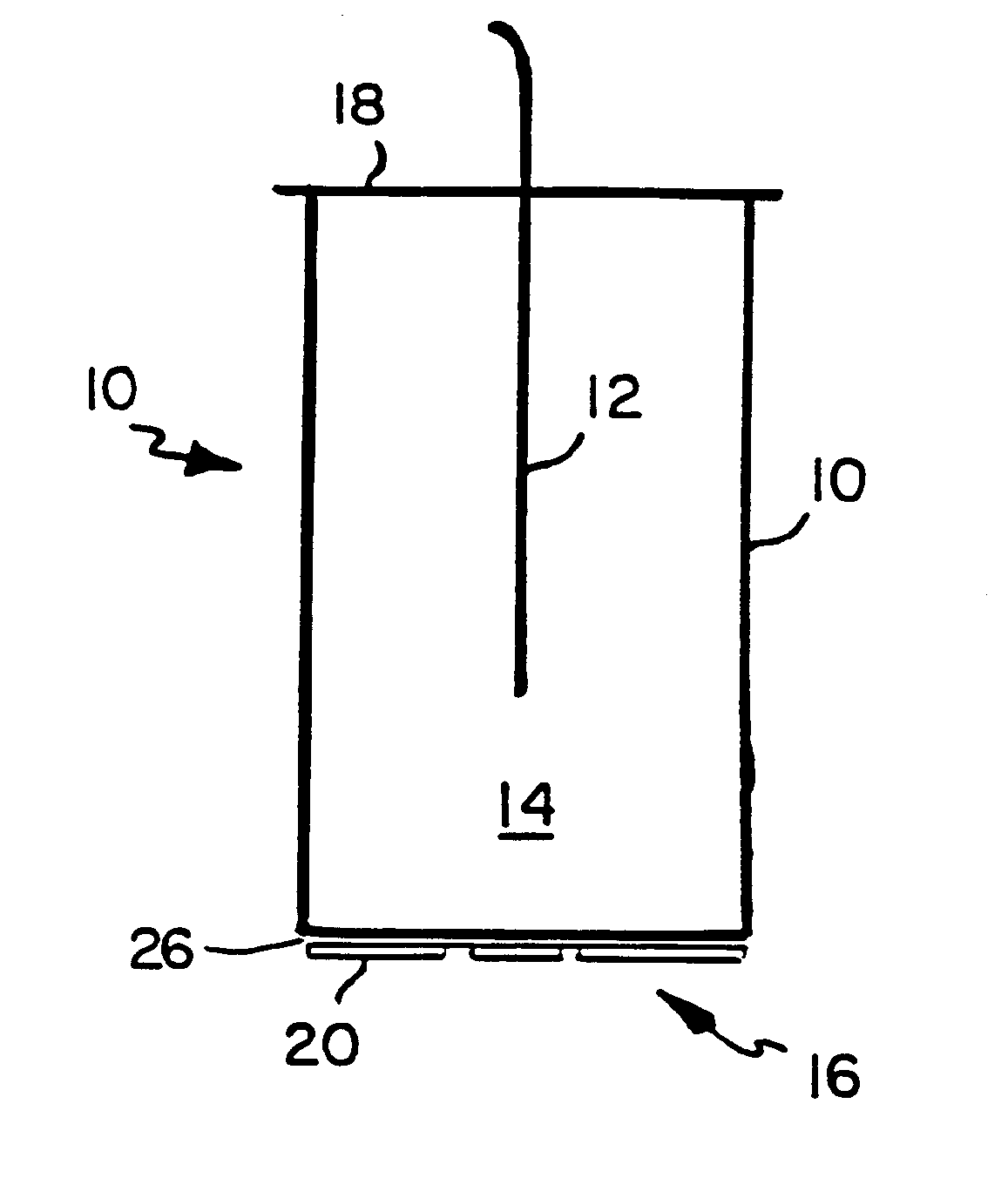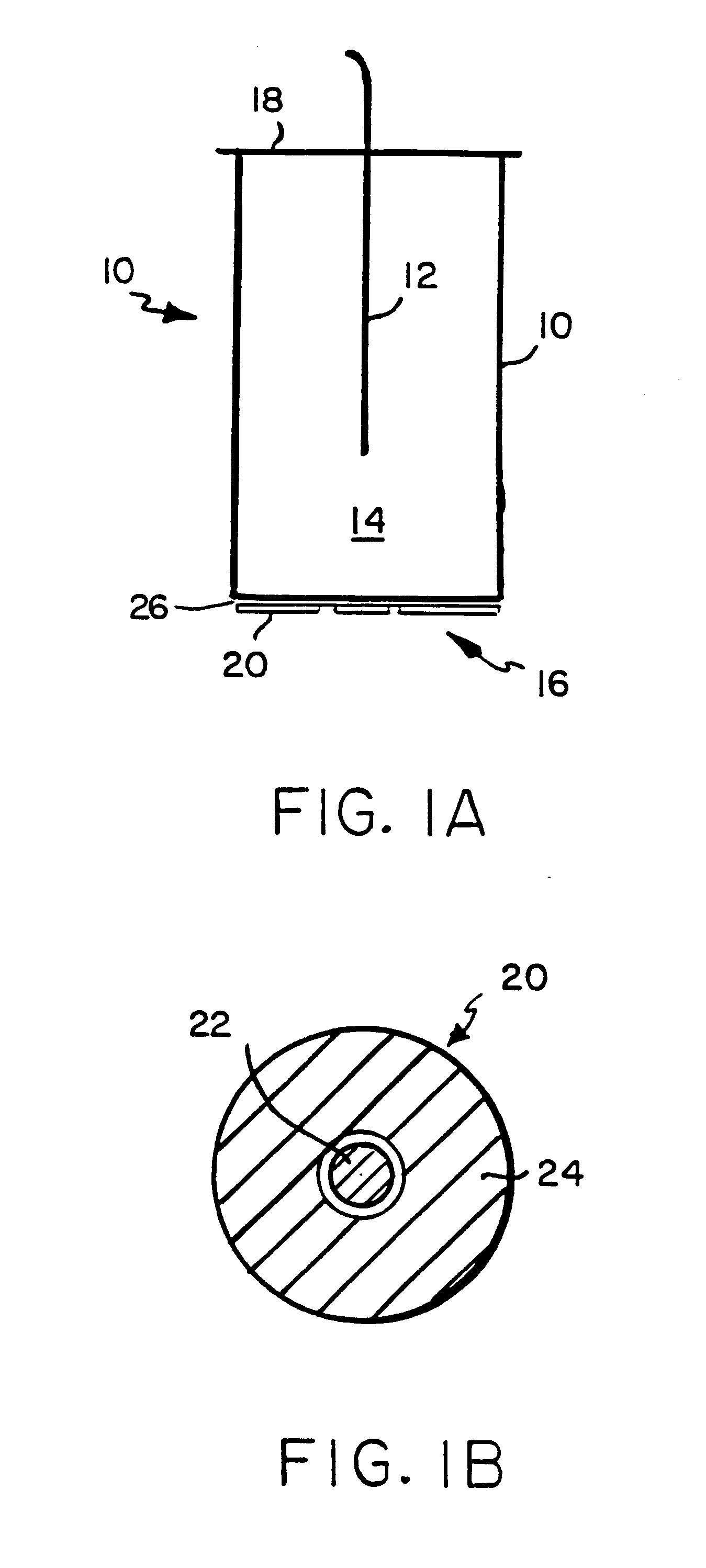Acoustic standing-wave enhancement of a fiber-optic salmonella biosensor
a biosensor and fiber-optic technology, applied in the field of fiber-optic biosensors, can solve the problems of destroying formation and limited intensity
- Summary
- Abstract
- Description
- Claims
- Application Information
AI Technical Summary
Problems solved by technology
Method used
Image
Examples
Embodiment Construction
)
Fiber-Optic Fluorescence Detection System
Referring to FIG. 1, a cylindrical test cell 10 is shown with a fiber tip 12 inserted into media 14 in the cell 10. A transducer 16 is located at the bottom of the cell and a reflecting plate 18 is located at the top of the cell. A single step-tapered fiber 12 is used for excitation and detection. The sensing fiber is located along the axis of the cell. The electrode plating of the transducer is indicated. The beam is from a diode laser (.lambda.=650 nm) focused into one branch of a 300-.mu.m 2.times.2 coupler, one branch of which is connected to the sensing fiber. The sensing fiber is fused silica with a 300-.mu.m core diameter, obtained from 3M Corp. The tip of the sensing fiber 10, which has had its cladding removed and its core diameter reduced in three steps from 300 to 40 .mu.m over a length of 20 mm, is inserted into a test cell 12. The tip and fiber optic sensing system are described in detail in our co-pending application Ser. No. 0...
PUM
| Property | Measurement | Unit |
|---|---|---|
| length | aaaaa | aaaaa |
| length | aaaaa | aaaaa |
| excitation wavelength | aaaaa | aaaaa |
Abstract
Description
Claims
Application Information
 Login to View More
Login to View More - R&D
- Intellectual Property
- Life Sciences
- Materials
- Tech Scout
- Unparalleled Data Quality
- Higher Quality Content
- 60% Fewer Hallucinations
Browse by: Latest US Patents, China's latest patents, Technical Efficacy Thesaurus, Application Domain, Technology Topic, Popular Technical Reports.
© 2025 PatSnap. All rights reserved.Legal|Privacy policy|Modern Slavery Act Transparency Statement|Sitemap|About US| Contact US: help@patsnap.com



